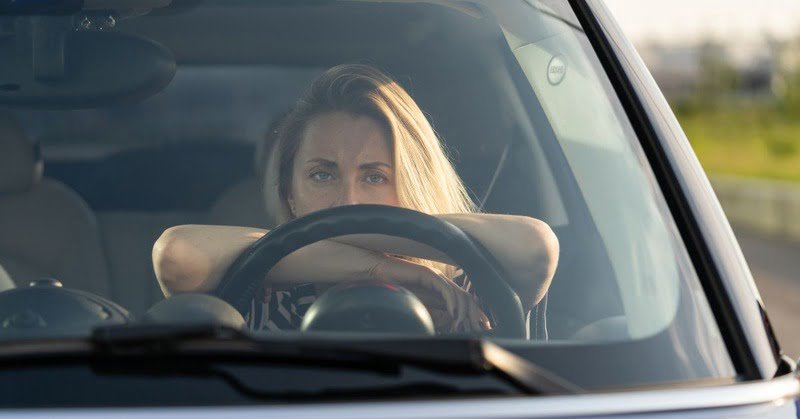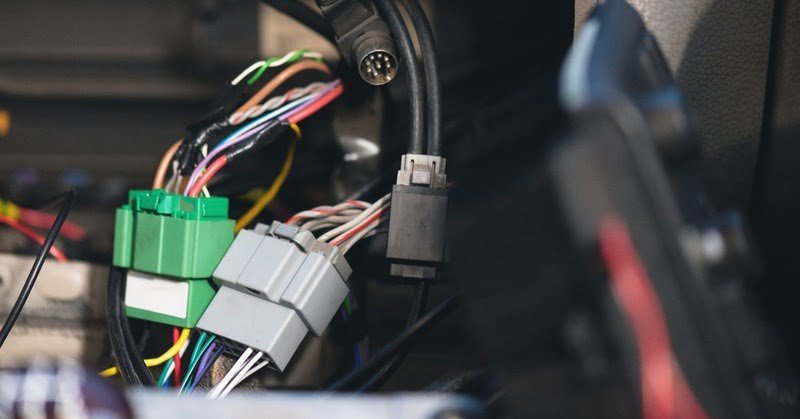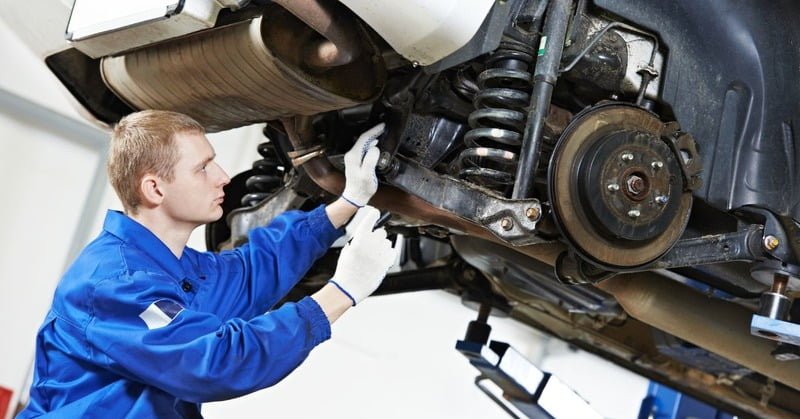Blog
Accidentally Drove Over a Curb? Here’s What You Should Do
We’ve all been there – a momentary lapse in attention and suddenly you’ve accidentally driven over a rolled curb.
Maybe you’re panicking right now, thinking that something might have gone wrong underneath your car, and who wouldn’t be?
In this article, we’ll cover all the information you need to understand whether or not driving over a curb is something to worry about.
By the end, you’ll be sighing with relief and will be getting back on the road in no time.
So don’t overthink things, and let’s get started.
Table of Contents
Should I Be Worried If I Drove Over a Curb By Accident?

It depends. How much damage driving over a curb can cause varies greatly. In some cases, especially if you were driving slowly or the curb was low, there might be no damage at all. However, hitting a high curb at a faster speed can cause serious damage.
Factors
Let’s look at what factors can affect whether you should worry about accidentally driving over a curb:
Speed
The faster you were going, the more likely it is that your car got damaged.
Curb Height and Angle

A tall or sharp curb can do more damage than a low, round one.
Vehicle Type
Cars that are closer to the ground are generally more likely to be damaged by curbs than taller cars.
Post-Impact Symptoms
Listen for strange noises, see how your car feels when you’re driving, and look for visible damage.
Location of Impact
Hitting a curb with your tire is different than hitting it with the bottom of your car.
What to Expect If You Accidentally Hit a Curb
Regardless of the factors we mentioned, here are some things you might want to consider that could have happened to your car after accidentally hitting a curb:
Tire and Wheel Damage
When you drive over a curb, the first parts of your vehicle to take the hit are usually the tires and wheels. This can result in visible cuts, punctures, or even a flat tire if the impact was significant.
CONSIDER READING: How to Fix Bubble in Tire’s Sidewall
Alignment Issues
The jolt from hitting a curb can sometimes be enough to misalign your car’s wheels. This misalignment can lead to uneven tire wear and might make your vehicle pull to one side while driving.
Suspension Damage
Your vehicle’s suspension system is designed to handle shocks and bumps, but a harsh impact with a curb can cause bent or damaged components. This could affect your car’s handling and overall ride comfort.
Undercarriage Damage
The undercarriage of your vehicle is vulnerable to damage when hitting a curb. Scrapes and dents could occur, potentially leading to more serious issues if not addressed.
Sheet Metal Damage
Impact with a curb could damage the sheet metal of your car, potentially exposing it to rust. This is especially concerning if the damage is not promptly repaired, as rust can quickly spread and compromise the structural integrity of your vehicle.
Exhaust, Lines, or Wiring Damage

The force of hitting a curb can also harm your car’s exhaust system, various lines, or wiring that runs along the underside of the vehicle. Damaged exhaust systems or lines could result in leaks or other malfunctions, while damaged wiring could affect the electrical systems in your car.
Oil Pan Damage
If the impact with the curb was severe enough, it could cause damage to your engine or transmission oil pans. This damage could result in oil leaks, which can be detrimental to your vehicle’s performance and longevity if not addressed promptly.
What to Do After Hitting a Curb by Accident?
After hitting a curb, it’s important to assess and address any potential damage to your vehicle to ensure it remains in top condition. Here’s a step-by-step guide on what to do:
Assess and Address Vehicle Damage
- Check for any cosmetic damage, such as dents or paint scrapes, on your car’s bumper and panels. If there are any, consider taking your car to a professional for repairs.
- Inspect your tires and rims for any visible damage. If you notice any leaks or damage, it might be time to replace the tire or get it repaired at a tire shop.
- If there are any damages to your car’s bodywork, visit a panel beater to get them fixed. They can often repair the damage without needing to replace parts, saving you money.
- Check external fittings like fog lights for damage and replace them if necessary.
Check Your Suspension and Steering

- Be on the lookout for any unusual vibrations or wobbles while driving, as these could be signs of suspension or steering rack damage. If you notice these symptoms, visit a mechanic immediately.
- Be on the lookout for any unusual vibrations or wobbles while driving, as these could be signs of suspension or steering rack damage. If you notice these symptoms, visit a mechanic immediately.
Ensure Radar System Functionality
- Modern vehicles often come equipped with radar components for features like adaptive cruise control and parking sensors. Make sure these systems are functioning correctly post-impact.
- If your car has a radar module in the bumper, check to see if it’s properly aligned to avoid malfunctions in traffic detection. If you’re not sure where the radar module is located, look for a plastic mound on the bumper or a collection of sensors on the windscreen.
Check Your Cooling System
- After the impact, look out for any signs of smoke or steam from your car’s bonnet, as these could indicate damage to the cooling system. If you suspect any issues, have your vehicle towed to a trusted mechanic.
- Regularly check for any bent pipes or disruptions in the flow of coolant to prevent your vehicle from overheating.
Inspect Your Exhaust System
- Examine your exhaust system for any potential damage or ruptures that could result in excessive noise or fumes entering the car’s cabin. Although the exhaust system is designed to withstand impacts, significant damage might require professional repairs.
If you want to avoid this problem while you park, read our ‘How to Avoid Hitting Curbs When Parking‘ article.
Conclusion
The steps mentioned above are intended to guide you on what to do to ensure your vehicle remains in good condition after accidentally hitting a curb. If you’re uncertain about any potential damage or necessary repairs, it’s always advisable to consult a professional mechanic.
Here at Smooth Curb, we strive to help our readers understand the potential dangers of curbs to your vehicle, whether in the driveway or on the road.
Different types of curbs can certainly be a headache, and knowing how to deal with them can be quite useful. Be sure to check out our blog where we discuss similar topics such as ‘tire damage from hitting a curb‘, and ‘what to do after hitting a curb with my car’s front passenger side‘.”
Additionally, consider exploring our product, the Smooth Curb – Driveway Curb Ramp. It’s our premium driveway curb ramp engineered for seamless entries and exits on your driveway; it can significantly reduce your chances of accidentally hitting those troublesome curbs.
We hope we’ve addressed your questions, and if you have any additional ones, please don’t hesitate to comment below. Our team is more than happy to assist you with any queries related to accidentally driving over a curb, and we look forward to seeing you in our next post.
FAQs
Have a few more questions about hitting a curb by accident? Maybe we’ve answered them below:
Why is my car shaking after I accidentally hit a curb?
Your car may shake after hitting a curb due to wheel misalignment, unbalanced tires, or damage to the suspension system.
Can accidentally hitting a curb damage power steering?
Yes, a severe impact from hitting a curb can potentially damage the steering components, affecting the power steering.
Can you break an axle by accidentally hitting a curb?
Yes, a hard impact with a curb can potentially break an axle or cause other structural damage to your vehicle.


